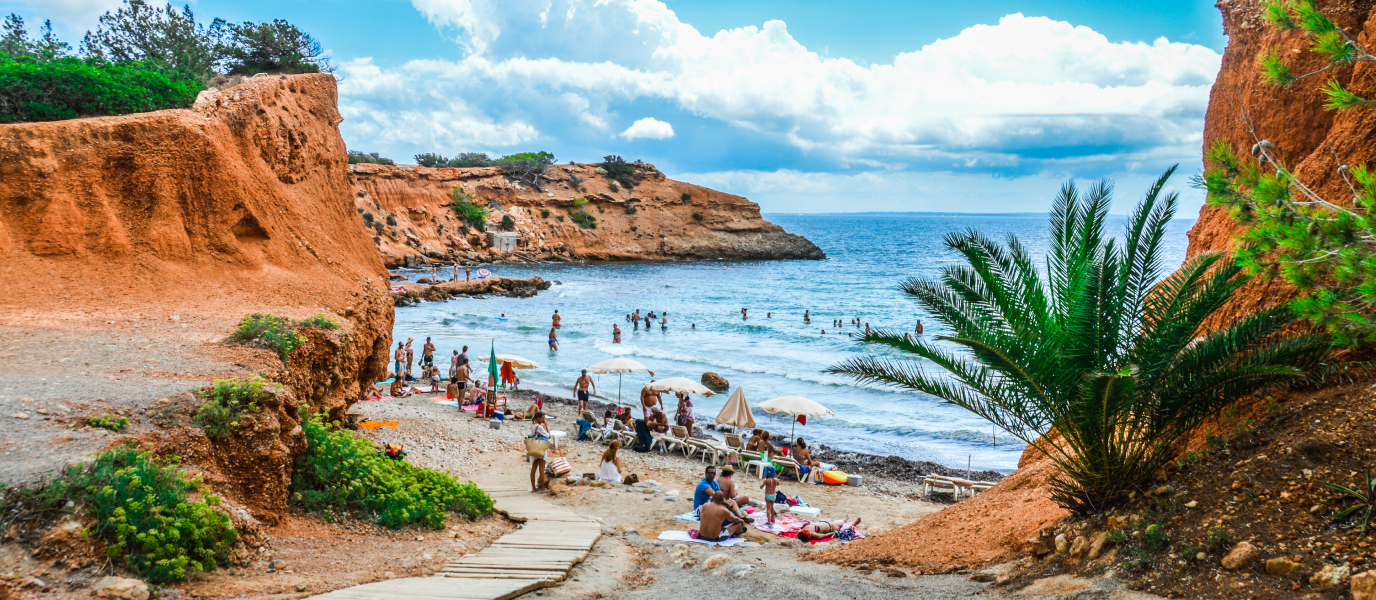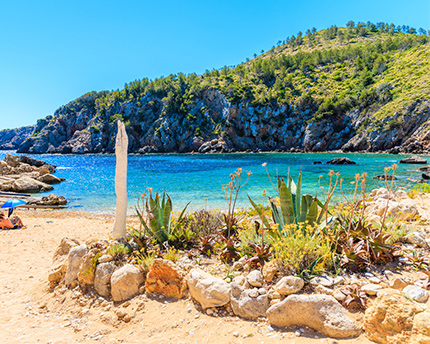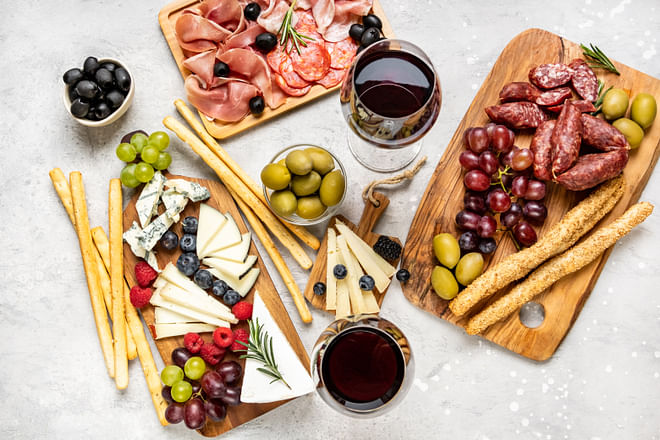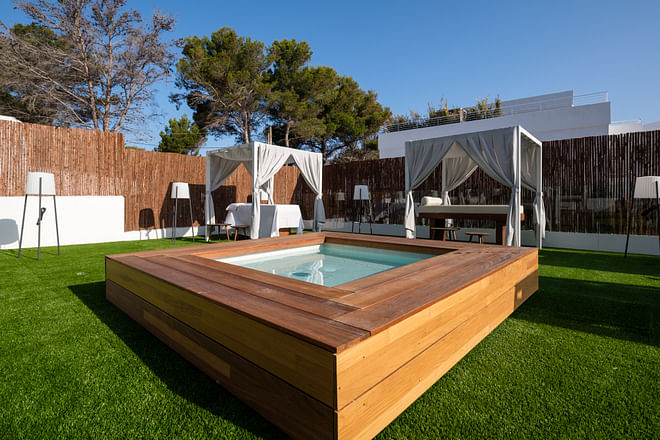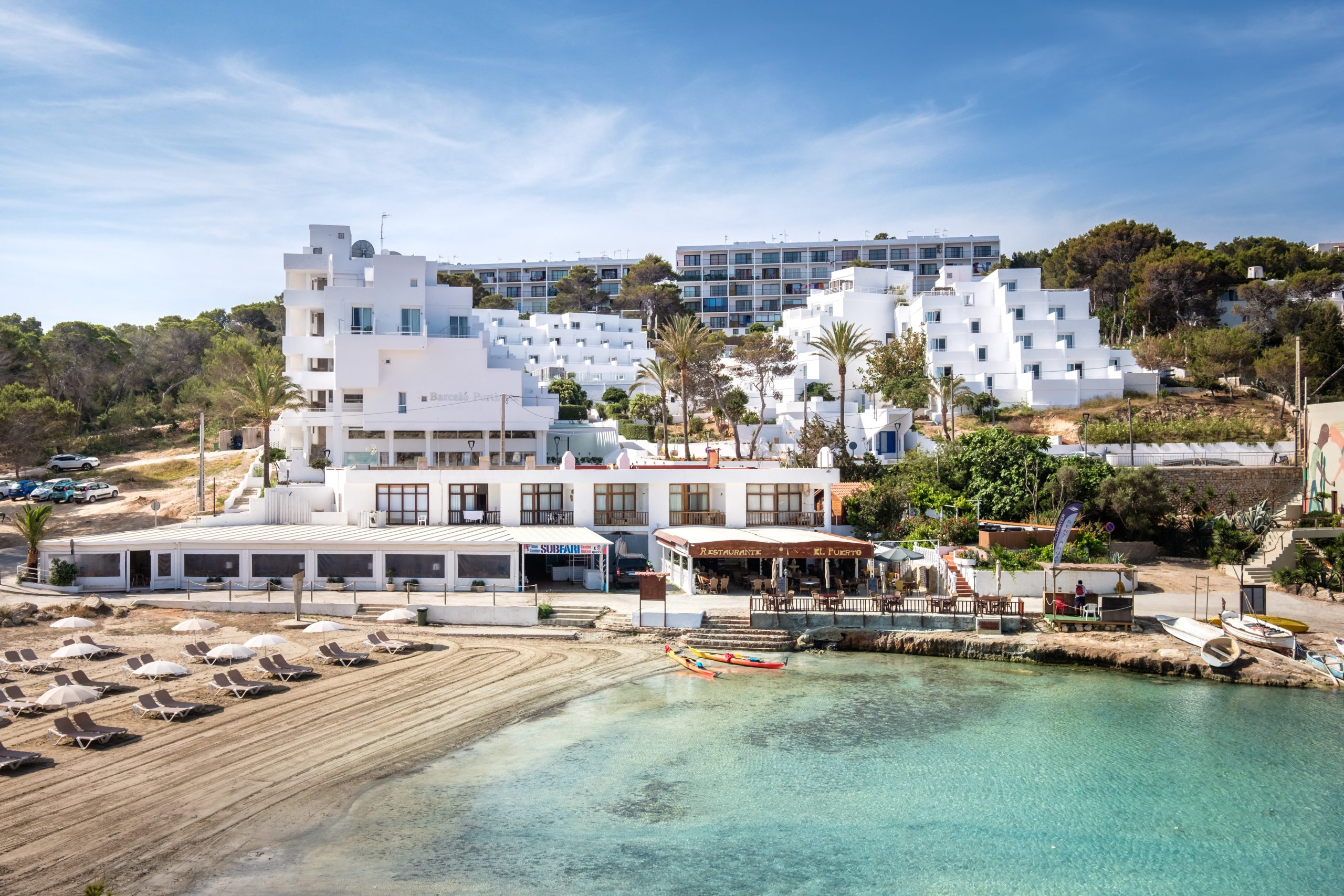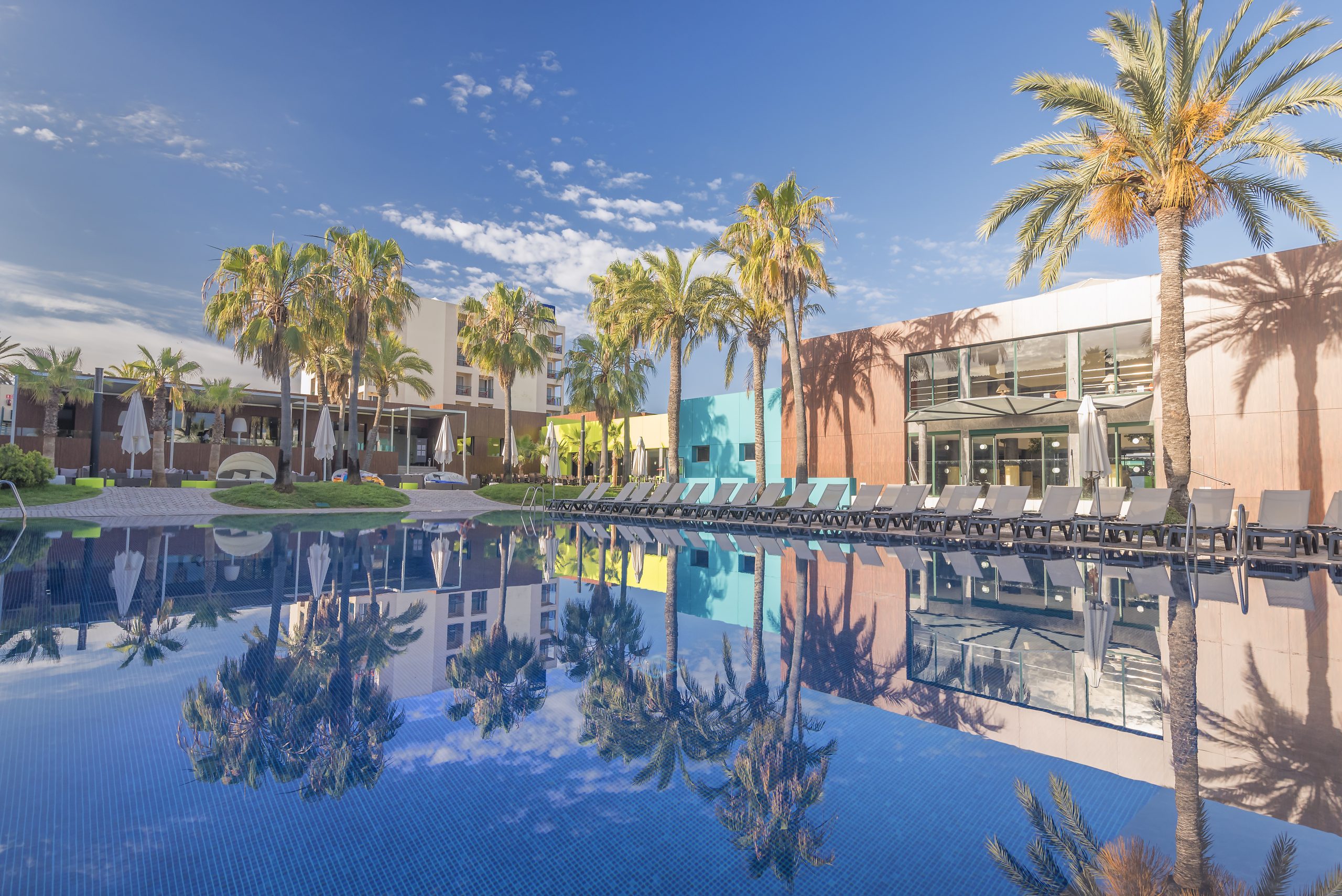Dalt Vila (meaning “high town”) is the name of Ibiza Town’s old quarter, a place that no visitor to this Balearic island can afford to miss. Dalt Vila is bounded by imposing Renaissance town walls, built in a heptagonal configuration. Since 1999, it has had the status of a UNESCO World Heritage Site. Let’s penetrate its walls, and explore its historic centre: the seat of the island’s government and its business and cultural capital. Will you join us?
The old town occupies the top of a hill, the Puig de Vila, and its unmistakeable profile, with the cathedral and castle at its highest point, is the emblem and hallmark of the island. As we begin our stroll around Dalt Vila’s narrow streets, their design and layout reveal traces left by various civilisations, a diverse mix of cultures to which Ibiza owes its open, cosmopolitan spirit.
What to see in Dalt Vila
Among the great treasures that you really shouldn’t miss on your visit to Dalt Vila are the Cathedral of Santa María de las Nieves; the Town Hall, located in the Can Botino building, a former Dominican monastery; the Museu d’Art Contemporani d’Eivissa, and the castle and its ramparts which protected the town from frequent attacks by corsairs and pirates. This is said to be the best-preserved fortification in the whole Mediterranean region.
There are other attractions to visit within Ibiza Town’s remarkable historic quarter, such as the convent of San Cristóbal (or Sant Cristòfol); this has a turntable where you can buy confectionery made by the cloistered nuns. There is also the Puget Museum, housed in a typical mansion which gives visitors an insight into rural life in early twentieth-century Ibiza; the Archaeological Museum and the Medina Yabisa Interpretation Centre, an opportunity to learn about the island’s Moorish past.
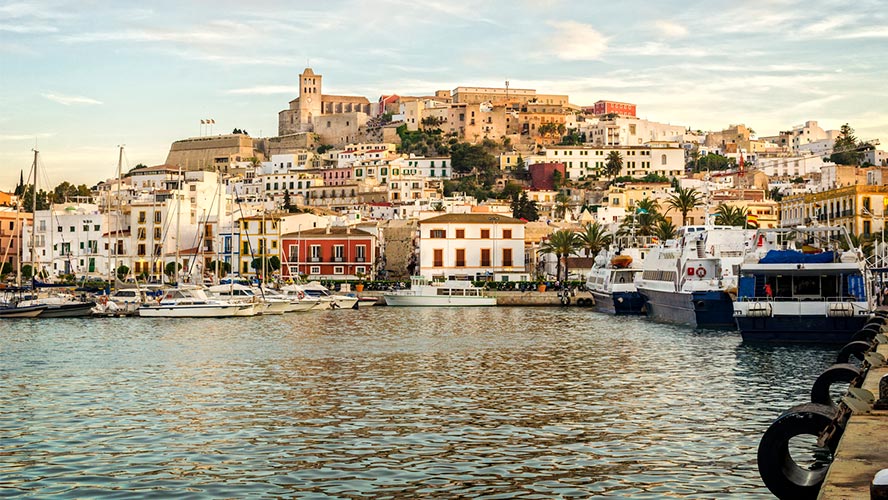
Ibiza’s walled old quarter
Built on the orders of Felipe II to protect the valuable salt marshes from attack by the Turks, Dalt Vila’s town walls were designed by an Italian architect, Giovanni Battista Calvi. Apparently, in order to build the walls, he needed to solve significant problems, such as a scarcity of rocks. His solution was to extract stone from the islets at Es Freus, the strait that separates Ibiza and Formentera, and from Atlantis, a small, rocky cove in the south-east of Ibiza.
The site now occupied by Dalt Vila’s castle was historically the seat of government on the island. The Governor’s house stood here, as did the Roman acropolis and the Moorish almudaina, although the buildings that occupy these sites today only date from the sixteenth and seventeenth centuries. These are the castle, the Homenaje [Tribute] tower, and the Governor’s house, which were used by the Army until, in 1973, they became the property of Ibiza’s Town Council.
Dalt Vila: Ibiza Town’s historic centre
However, Dalt Vila conceals a history that is very much older than its walls. Scholars tell us that at the end of the seventh century B.C., this area was inhabited by the Phoenicians. They first settled in Sa Caleta (also a World Heritage Site), and soon afterwards moved to what is now Ibiza Town, where they co-existed with the Romans in a confederated city of the Empire called Ebusus.
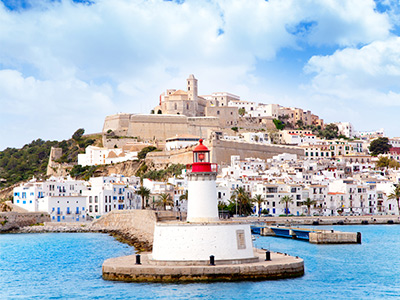
This was only the beginning in a chain of cultures that occupied Ibiza. Next came the Vandals, then the Byzantines, and later the Moors. Until, in 1235, Jaume I and his Catalan nobles decided to invade Ibiza. Legend tells that the conquest was very easy because the brother of the Muslim sheik deliberately left open an entrance to the city in revenge for a romantic betrayal. Following this, Catalans began to settle on the island, the majority of them farmers from Ampurdán. Every year on 8 August, the reconquest is celebrated on the festival of San Ciriaco.
Only road vehicles driven by residents are allowed in Dalt Vila, so tourists have to do their sightseeing on foot. Dalt Vila has five entrances. The main one, and the most imposing, is the Portal de Ses Taules, located next to the Old Market. It leads into the Patio de Armas and the lively Plaza de Vila de Ibiza, where there are enticing shops and lovely restaurants such as La Torreta. The others are Portal Nou, Portella de Sella, and Portal de Soto es Fosc; lastly, there is an entrance allowing access for road vehicles.
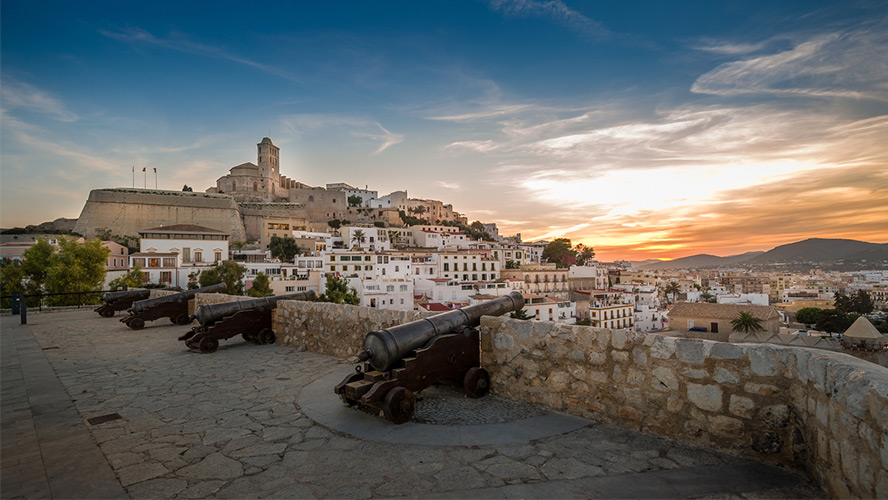
Old cannons of the walled enclosure of Dalt Vila
Tras su victoria, las tropas cristianas decidieron levantar un templo bajo la advocación de Santa María de las Nieves, la festividad mariana más cercana al día de la conquista. De hecho, son muchas las mujeres ibicencas que tienen por nombre Nieves debido a la gran devoción mariana que existe en la isla.
Every year since 1999 (the year in which it was declared a World Heritage Site) in the second weekend of May, Dalt Vila has organised a medieval fair in the oldest streets of the town, a dazzling spectacle of colour and celebration. Hordes of minstrels, craftsmen and women, spice sellers, dancers, knights, princesses, snake charmers… all this awaits tourists who arrive on the White Island during its traditional medieval fair. All the streets within the walled town of Dalt Vila are festooned in banners to celebrate a festival attended by over 100,000 people.
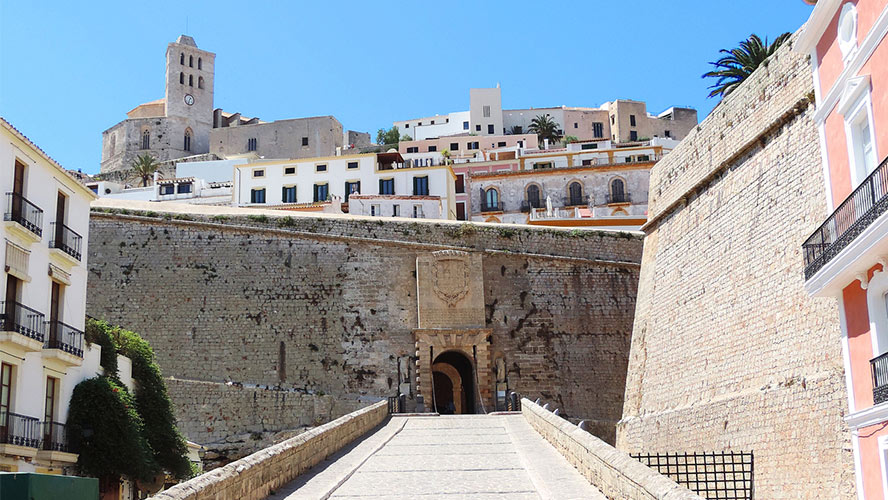
A festival with links to the Middle Ages
For four days, the Pityusic island is transformed into a scene of spectacle and festive celebration of a time in the distant past, which continues to reverberate around not only the historic quarter of Ibiza Town, but all over the entire island. This is something well worth seeing in Ibiza Town.
From the vantage point of this white ‘acropolis’, visitors can enjoy spectacular scenery with views of the sea and the port, and they can breathe in all the aromas of its ancient, picturesque streets. Sa Carrosa square has a special charm, thanks in part to one of its restaurants. El Portalón, which stands very close to the Santa Lucía rampart, enjoys impressive views of Ibiza Town’s port and of the La Marina and Sa Penya neighbourhoods. It is worth waiting around for sunset — a truly remarkable spectacle.
To stroll through Dalt Vila’s labyrinth of white, cobbled streets is literally to take a walk through the history of Ibiza. From the Phoenicians to the present.




































































